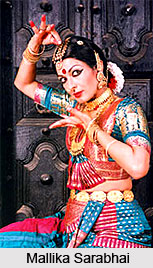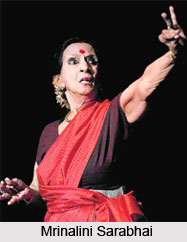 Darpana Academy of Performing Arts started as a small dance academy that was founded six decades ago in Ahmedabad, Gujarat by Mrinalini Sarabhai and Vikram Sarabhai in 1949. Darpana Academy of Performing Arts today is a massive workshop for the arts: where traditional beliefs meet technology to break the boundaries between art and life.
Darpana Academy of Performing Arts started as a small dance academy that was founded six decades ago in Ahmedabad, Gujarat by Mrinalini Sarabhai and Vikram Sarabhai in 1949. Darpana Academy of Performing Arts today is a massive workshop for the arts: where traditional beliefs meet technology to break the boundaries between art and life.
Performers from world-over work together in Darpana Academy of Performing Arts to open mindscapes through the arts. After the original founders of this institution, the training and supervision has been directed by their daughter Mallika Sarabhai for the last three decades. The Academy`s vision is a contemporary amalgamation of affirming the role of creativity in culture, researching into the basic origins of life and reaching out to the unsaid or unthought of themes in a language that is universal. Darpana Academy of Performing Arts today is a promising centre for artists dedicated to excellence, innovation and the excitement of using the variant art styles for a change.
The departments of Darpana Academy of Performing Arts range from performance and teaching of the arts, to the use of presentation and arts as development communication, through direct impact and software aid. The audiences who regularly visit Darpana Academy of Performing Arts to take a glimpse of its performing activities, range from arts-lovers to people in positions of power, children, the less privileged across the world, women, tribal populations and so on.
Darpana Academy of Performing Arts is one of the most strongly founded Indian dance academies with more than 25,000 graduates, nearly 11000 performances, audiences in 90 countries and pulsating arts environment. The entire activities of Darpana Academy of Performing Arts are managed by a strong staff group. Darpana is a merging point of performing artists and intellectuals. The Drama Section works under the expert Kailash Pandya and Damini Mehta, who are responsible for more than 100 productions of a wide variety.
 Initially, Darpana Academy of Performing Arts also attracted young writers and staged their first scripts, making them an integral part of production efforts. Some of the names can be mentioned are Labhshankar Thaker, Madhu Rye, Shrikant Shah, Chinu Modi, Subhash Shah and Hasmukh Baradi. The academy also conducted theatre-training courses for over two decades. The research wing of this academy is called the Janvak that published monographs like Goverdhan Panchal`s on Bhavai.
Initially, Darpana Academy of Performing Arts also attracted young writers and staged their first scripts, making them an integral part of production efforts. Some of the names can be mentioned are Labhshankar Thaker, Madhu Rye, Shrikant Shah, Chinu Modi, Subhash Shah and Hasmukh Baradi. The academy also conducted theatre-training courses for over two decades. The research wing of this academy is called the Janvak that published monographs like Goverdhan Panchal`s on Bhavai.
At the core of the Darpana Academy, resides a group of highly trained and multidisciplinary artists` who are proficient not only in dance or music but in theatre, martial arts and other related forms as well. The artists, forming the Darpana Performing Group train the students and work together everyday and either stage group presentations or solo performances. These performances range from classical and contemporary dance to folk theatre, musical theatre and puppetry with an extensive and varied repertoire. Guest composers, choreographers and other artists often collaborate in such productions of the academy.
Darpana had an academic experimental bent under the Sarabhais and now their daughter Mallika, a sensitive actress, dancer, and director. The Drama Section, under acting duo Kailash Pandya and Damini Mehta, is responsible for more than 100 productions of a wide variety. The range includes Tagore`s Chandalika, Madia`s Ramlo Robinhood, C. C. Mehta`s Sita, Kanetkar`s Premrang i.e `Colour of Love`, Dahyabhai Jhaveri`s Vinaveli.
Darpana has also built a new thrust auditorium in 1991, Natrani, suggestive of Greek amphitheatres, on the banks of the river Sabarmati. The Darpana Academy of Performing Arts works closely with Natarani that is a sister concern and also multicultural arts centre. The original group has also given birth to Darpana Communications and Darpana for Development on issues on which public awareness are to be spread. Natarani is Gujarat`s only state-of-the-arts venue that was mainly constructed to give local audiences the opportunity to see world class performance and to give local artists a strong platform to build on.
Each year Natarani presents around 80 events, including dance performances, concerts, plays, cultural programmes and films. Besides the productions of Darpana Academy of Performing Arts, the theatre also stages other shows. The open gallery space allows Natarani to host thematic events including live performances; craft demonstrations, sale showrooms, sculpture and painting exhibitions and specialty food at the café. Darpana Academy of Performing Arts has achieved a iconic name in the field of Indian performing arts. The students, teachers and all other associates have special contribution to the Indian artistry.



















